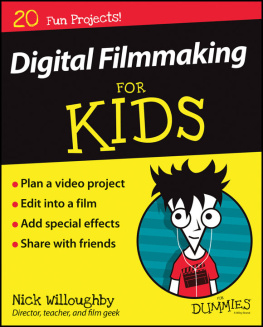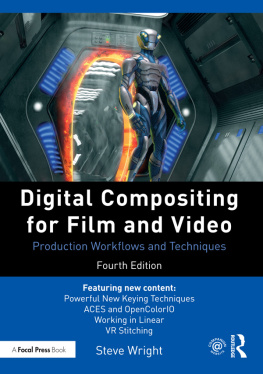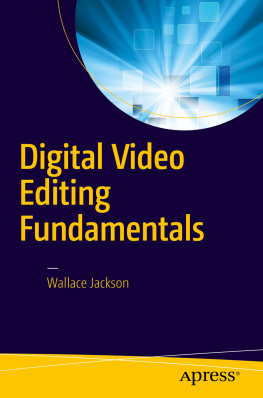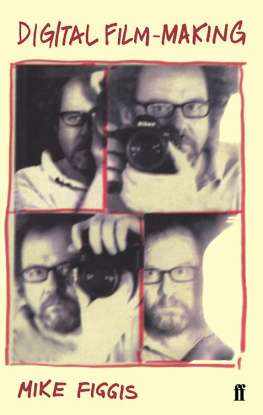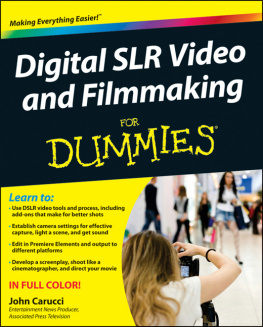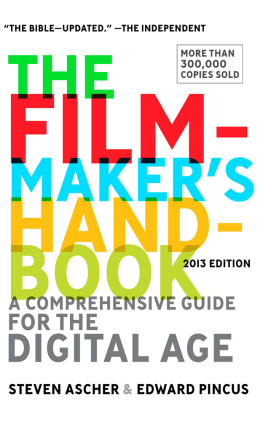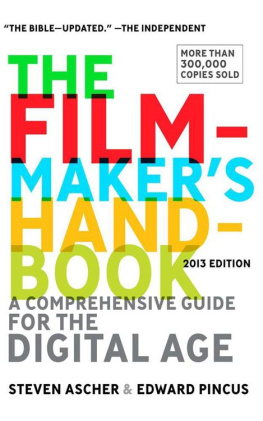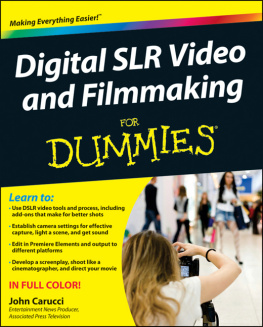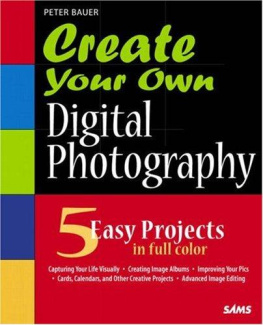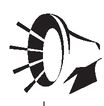Table of Contents
Introduction
I am proud to be a complete idiot. You see, there are plenty of plain idiots out there who are convinced that they have nothing more to learn because they already know everything. On the other hand, a complete idiot, even though he or she already knows quite a bit, always wants to know more. The complete idiot is distinguished by a yearning for lifelong learning.
I have been involved in the filmmaking process my entire life, starting out at the age of 12 as a child actor in feature films in Europe. My first film was entitled Professor, Please, foreshadowing the fact that thirty-some years later, following my educational careers at both New York University and the American Film Institute in Hollywood, I would end up as a professor of Film and Television.
During my professional journeys in the past three decades, which included making videos and films in India, Sweden, Hungary, and Brazil, just to name a few, I have had opportunities to observe and experience the emergence of digital video around the world. From a technological point of view, the process has been characterized by miniaturization, making the early bulky equipment smaller, lighter, and more portable.
Today we can shoot with lipstick-cameras, edit on cell phones, and carry our Personal Digital Assistant (PDA) in our pockets. It is a different life altogether. The great visionary of the coming of the digital age, Marshall McLuhan, taught us that new technologies are the extensions of the human senses, and therefore computers would become the extensions of the human central nervous system. And all the computers of the world united form a collective consciousness of everything the human race can know, which includes film, literature, music, television, and videoall in digital form. The Internet is a World Wide Web of the human consciousness.
The entire history of these new media has been a process of democratizationof taking filmmaking from the privileged few and placing the tools of audiovisual communication into the hands of everyday people, as well. The digital revolution is the final, decisive phase in this great opening up of the moviemaking process.
The most important development in todays world of film and television is that the traditional methods of filmmaking have been alteredand even replacedby digital methods and software. Today, anyone equipped with a small digital video camera and a computer can create a digital video and present it to an audience of millions.
So with all this possibility, how can you know where to begin? Right here with this book. It contains all you need to learn for practical applications of digital video, and provides an overview of the entire process, from finding and developing ideas through turning them into high-quality digital videos to sharing them with your audience at home, in screening venues, or on the Internet.
So, my dear fellow Complete Idiots, lets embark together on a journey to the ever-shifting world of digital video.
Part One, Digital Video Basics, gives you an overview of what you need to prepare yourself to immediately go into production. The basic knowledge and equipment necessary to shoot and edit with an understanding of how lenses and lighting work and what legal aspects you need to be aware of.
Part Two, Preproduction, deals with developing the most important elements for the production of your digital video: Writing the script, previsualizing your scenes, and getting the crew, the talent, and lighting equipment for the production.
Part Three, Production, describes how the written material on paper gets turned into digital video. We focus on directing and the production environment, audio recording, and tips for digital videos of unscripted events.
Part Four, Postproduction, explains the capturing and editing of digital video and audio, recording the final edited product on DVD, and different methods of sharing and distributing your digital videos.
Extras
Youll see many sidebars throughtout the book that offer you a little something extra. Heres what to look for:
definition
These sidebars will define important terms as they are introduced in the text.
Quiet on the Set!
These sidebars will include warnings whenever danger is involved.
Zoom In
These sidebars will include quick tips for shooting and editing.
Karls Tips
These sidebars give practical advice based on personal professional experience.
Acknowledgments
This book simply would not have been written without the encouragement and support of Alpha Books acquisitions editor Michele Wells. I am also indebted to our technical reviewer, Joseph Faria, and the entire editorial, design, and publishing team at Alpha Books. I wish to thank technical editor Bob Shell for his help with this project, as well.
No one writes a book in a vacuum. New York Universitys Kanbar Institute of Film and Television, my academic home away from home, has been my creative environment for the past 15 years, and I wish to thank my deans, my colleagues, and my students for the exceptional experience of learning while teaching. With former student Matthew Kliegman, I edited my recent digital feature film on Final Cut Pro, assisted by another former student, Jason Baum, who also helped me with some of the line drawings, photography, and visuals. I thank you both, and give special thanks to Prof. Ken Dancyger of NYU for his inspiration and support.
Another source of inspiration has been the great Oscar-winning cinematographer, Vilmos Zsigmond. Working with him was an experience that taught me lifelong lessons in filmmaking, and I am happy to share some of them with the readers of this book.
Thanks to the American Film Institute for jumpstarting my career in film and video decades ago, and for offering me an insight to Hollywood.
I am also grateful to Professor Sandeep Marwah, Director of the Asian Academy of Film and Television in Film City, India, for inviting me to deliver lectures and digital production workshops that also served as a basis for this book. Thanks to the faculty and the motivated students there, as well. Thanks to producer/writer Arnon Louiv Dantas for inviting me to direct Out of Balance, a full-length digital feature film, which I used as an example in several chapters. And special thanks to my friends Gabor Kindl and Laszlo Nagy for working with me on this feature film in Rio and Miami, and for repeatedly inviting me to be artistic director of DIGI24, the first digital filmmaking competition in the entire world for three-minute shorts shot and edited in 24 hours. My lectures and workshops at this digital competition have also helped develop parts of this book.
Many thanks to poet Sharon Esther Lampert for her patience and suggestions as I read aloud some of the more complicated sections of this book.
Also, thanks are in order to Jules Apatini Jr. for some of the photography and for the virtual sets, and to Edina Zsarnai for collaborating on our digital television news series that I also used as a source for this book. The author is obliged to Abel Cine Tech and Tamberelli Lighting for the access to camera support, lighting, and grip equipment.


